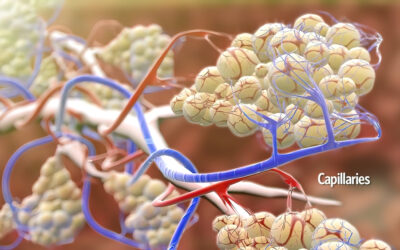Studies suggest the peptide known as CJC-1295 seems to perform a similar role to that of GHRH, which might result in increased growth hormone. The DAC is a metabolic complex that may potentially lengthen the peptide’s shelf life dramatically. The projected compounding potential of a combination of CJC-1295 and Ipamorelin has been the subject of ongoing research. The peptide known as CJC-1295 is a growth hormone-releasing hormone (GHRH) analog that is synthetic and has 29 amino acids.
Researchers suggest that the hypothalamus may be responsible for the production of Growth Hormone-Releasing Hormone (GHRH) and may also boost the synthesis and release of Growth Hormone (GH). It would seem that metabolic state, gender, and age all may impact the quantity of GHRH generated. GHRH plays an important role in both the induction of sleep and hunger signalling. Additionally, the Growth Hormone that is dependent on GHRH has a function in metabolism. It may accelerate protein synthesis and keep blood glucose levels within normal ranges. Additionally, it has been speculated to promote development; specifically, it may cause organs, such as the liver, to generate growth hormones that contribute to increased bone formation. Abnormal growth may be the result of GHRH functioning improperly.
CJC 1295 DAC Peptide Overview.
The CJC-1295 is known by various names, including long-acting GHRH analog, synthetic GHRH analog, and DAC: GRF. It is sometimes known simply as CJC-1295. Because the peptide is thought to operate as a releasing factor for growth hormone, CJC-1295 has been investigated to see whether or not it might have a role in the following areas:
- The lowering of fat cell storage by the consumption of fat itself as a source of fuel. Because it may stimulate the production of new proteins, it may increase total muscle mass.
- Because growth hormone encourages bone development in addition to enhanced health of joints and connective tissue, CJC-1295 peptide may increase bone mass in addition to reducing the risk of injuries.
- As suggested by several studies, GHRH may help maintain regular circadian rhythms and sleep patterns. This function might be extended to analogs such as CJC-1295.
CJC-1295 DAC Peptide: Mechanism of Action.
In 2006, researchers conducted two different experimental investigations to examine the potential effects of CJC-1295. In the first experiment, the active compound CJC-1295 or a placebo was given to the research models in one of four increasing concentrations. On the other hand, the CJC-1295 peptide was presented to the subjects twice or three times a week in the second study. As suggested by the findings, when the research models were exposed to CJC-1295, there was an apparent rise in levels of both growth hormone (GH) and insulin-like growth factor 1 (IGF-1: Insulin-like growth factor 1).
In 2006, a different team of researchers examined the GH pulsatility after a single occurrence of CJC-1295. After a single presentation of CJC-1295, the researchers hypothesized that there seemed to be an increase of around 50% in GH secretion and IGF-I levels.
To further understand the capabilities of CJC-1295, additional tests on animals were carried out. Mice participated in an intriguing trial in which either the peptide or a placebo was given to them. The researchers speculated that giving CJC-1295 once daily to the mice might restore the animals’ development. Another discovery was that presenting CJC-1295 once every two or three days seemed to give intermediate outcomes, which suggested an activity that was probably interval-dependent.
CJC-1295 DAC and the Half-Life of Peptides.
The CJC-1295 that was first developed has been hypothesized to make use of a method that is known as Drug Affinity Complex (DAC). Due to the DAC technology, it has been claimed that the half-life of CJC-1295 is much longer than that of GHRH. This contrasts with the fact that GHRH has a half-life of approximately seven minutes.
CJC-1295 DAC Peptides as Ancillaries.
In 2005, researchers started examining the mechanism of action of CJC-1295 in research models of immunodeficiency virus (HIV) and visceral obesity. The purpose of the study was to determine how CJC-1295 worked. During this research, the subjects were exposed to CJC-1295 for three months, and then there would be a follow-up period of six weeks.
As suggested by the findings of research carried out in Norway in 2009, the material was sent in for testing to determine whether or not it included any compounds. The researchers’ findings at the NDCL and School of Pharmacy suggested this chemical is known as CJC-1295. They hypothesized that “CJC-1295 is a releasing factor for growth hormone” in the paper that they published.
Only those doing research or working in laboratories can access the CJC-1295 DAC peptide. Before placing a purchase, we ask that you please read and abide by the Biotech Peptides terms and conditions. Please note that the substances mentioned in this paper have not been approved for human consumption.
+6 Sources
Freaktofit has strict sourcing guidelines and relies on peer-reviewed studies, educational research institutes, and medical organizations. We avoid using tertiary references. You can learn more about how we ensure our content is accurate and up-to-date by reading our editorial policy.
- Linder J. The science behind peptides. Plast Surg Nurs. 2012 Apr-Jun;32(2):71-2. PMID: 22647954.; doi: 10.1097/PSN.0b013e3182577344.
- Henninge J, Pepaj M, Hullstein I, Hemmersbach P. Identification of CJC-1295, a growth-hormone-releasing peptide, in an unknown pharmaceutical preparation. Drug Testing and Analysis. 2010 Nov-Dec;2(11-12):647-650.; DOI: 10.1002/dta.233.
- Kastin, A., 2006. Handbook of biologically active peptides. 1st ed. Amsterdam: Academic Press, CHAPTER 93 – Growth Hormone-Releasing Hormone pp.663-671.;
- Steiger A, Holsboer F. Neuropeptides and human sleep. Sleep. 1997 Nov;20(11):1038-52. PMID: 9456470.;
- ClinicalTrials.gov, A service of the US National Institutes of Health. Available at: ; http://clinicaltrials.gov/ct2/show/NCT00267527
- Teichman SL, Neale A, Lawrence B, Gagnon C, Castaigne JP, Frohman LA. Prolonged stimulation of growth hormone (GH) and insulin-like growth factor I secretion by CJC-1295, a long-acting analog of GH-releasing hormone, in healthy adults. J Clin Endocrinol Metab. 2006 Mar;91(3):799-805. Epub 2005 Dec 13. PMID: 16352683.; doi: 10.1210/jc.2005-1536.

 Workout
Workout
 Meditation
Meditation


 Stories
Stories


 Podcast
Podcast E-book
E-book











